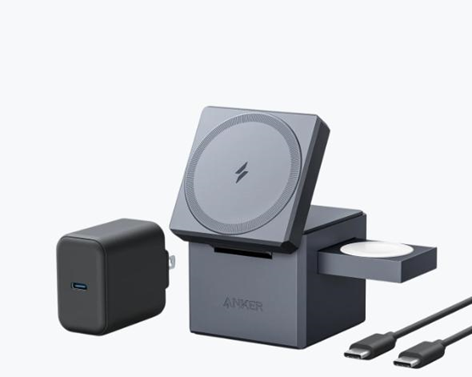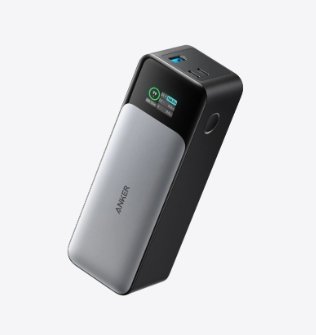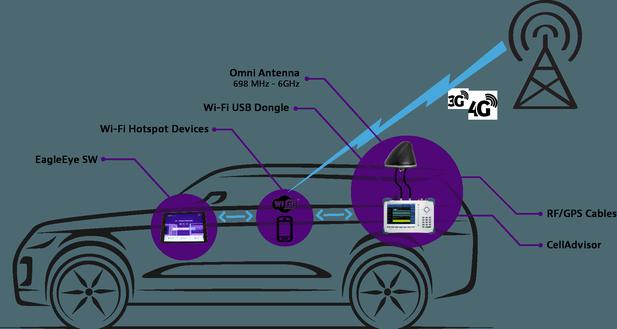vdsl
Specific introduction
VDSL (Very-high-bit-rateDigitalSubscriberloop) ultra-high-speed digital subscriber loop. Simply put, VDSL is the fast version of ADSL. VDSL can be symmetrical or asymmetrical. Running at a high speed, the highest symmetrical speed in each direction is 26Mb/s. Other typical rates of VDSL are a symmetrical rate of 13Mb/s, a downstream rate of 52Mb/s, an upstream rate of 6.4Mb/s, and other combinations of asymmetrical rates.
VDSL is an asymmetric DSL technology. Like ADSL. technology, VDSL also uses twisted pair cables for voice and data transmission. VDSL utilizes the existing telephone line and only needs to install a VDSLmodem on the user side to realize the user access. Most importantly, there is no need to redistribute or change lines for broadband Internet access. VDSL technology uses frequency division multiplexing technology, data signals and telephone audio signals use different frequency bands, do not interfere with each other, and can make or receive calls while surfing the Internet.
The VDSL system structure is shown in Figure 1. Using the VSDL system, the ordinary analog telephone line does not need to be changed, and the image signal is sent to the far end from the central office digital terminal image interface via the feed fiber, and the rate can reach STM-4 (622Mb/s) or higher.
VDSL transceivers usually use DMT modulation (CAP modulation can also be used), which has great flexibility and excellent high-frequency transmission performance.
The speed of VDSL is much higher than that of ADSL and CableMedem (cable modem), which is equivalent to the data transmission rate of T3. It can greatly increase the speed of Internet access, provide fast links between different local area networks, and can be used to develop video information services.
From a technical point of view, VDSL can actually be regarded as the next-generation technology of ADSL, and its average transmission rate can be 5 to 10 times higher than that of ADSL. VDSL can provide a higher data transmission rate and can meet more business needs, including the transmission of high-fidelity music and high-definition television, which is a true full-service access method. Because the transmission distance of VDSL is shortened (the transmission distance is usually 300 meters to 1000 meters), the inter-code interference is small, and the requirements for digital signal processing are greatly simplified, so the equipment cost is lower than that of ADSL. In addition, according to the actual needs of the market or users, the VDSL uplink and downlink rates can be set to be symmetrical or asymmetrical.
Related technology
Transmission mode
(1) STM mode. Synchronous Transfer Module (SynchronousTransferModule) is the simplest transmission method, also known as time division multiplexing (TDM). The bit streams of different devices and services are allocated to a fixed bandwidth during transmission.
(2) Grouping mode. In this mode, the bit streams between different services and devices are divided into packets of different lengths and addresses for transmission; all packets are transmitted on the same "channel" with the maximum bandwidth.
(3) ATM mode. ATM can exist in three forms in a VDSL network. The first is the ATM end-to-end mode, which is similar to the packet packet. Each ATM cell has its own address and is transmitted through a non-fixed line: the difference is that the ATM cell length is smaller than the packet packet, and there are Fixed length. The second and third are the mixed use of ATM and STM and ATM and packet mode. Logically speaking, these two forms are the VDSL system forming an end-to-end transmission channel between ATM devices.
Modulation technology
Because VDSL's unique and powerful modulation technology is one of the reasons for the extremely fast transmission speed of VDSL. Quadrature amplitude debugging and support for discrete multi-tone modulation are the main categories of today's VDSL modulation technology. Among them, the application range of the quadrature amplitude technology is very large. It mainly modulates the orthogonal carrier to transmit two half-speed data streams formed by decomposing the data, and then performs detection between the two data on the receiving end. The advantage is that it is easy to operate and the required equipment support is very low. Discrete multi-tone is to achieve the maximum information flow, using multiple sub-channels to send bits of different lengths. In short, the modulation technology of VDSL is quite mature and has been widely used in practice. It is precisely because of the advanced modulation technology of VDSL that it has the characteristics of output speed and reduced interference.
Spectrum allocation
In general, VDSL spectrum allocation is to use VDSL spectrum allocation technology to achieve a state where telephone signals and data signals do not interfere with each other. While using the network, the phone can also be used normally. Downlink 0.9~3.4MHz, uplink 4.0~7.75MHz is the frequency of spectrum allocation. But these are not limited numbers, and the required values can be achieved in different ways. This mode of spectrum allocation is also favored by the majority of broadband users.
Other technologies
The technology used by VDSL is largely similar to ADSL. The difference is that ADSL must face greater dynamic range requirements, while VDSL is relatively simple. VDSL. Overhead and power consumption are smaller than ADSL. The user-side VDSL unit needs to complete physical layer media access (access) control and uplink data multiplexing functions.
Technical features
(1) High-speed transmission: VDSL technology is the fastest one among xDSL technologies. The downlink data rate is 13Mb/s and 15Mb/s, which can reach 55.2Mb/s in theory. The uplink data rate is 1.5~2.3Mb/s, up to 19.2Mb/s. In a short distance, the maximum downlink rate can reach 55Mb/s, and the uplink rate can reach 19.2Mb/s, or even higher. Currently, it can provide 10Mb/s uplink and downlink symmetric rate.
(2) No mutual interference: VDSL data signals and telephone audio signals are modulated in their respective frequency bands based on the principle of frequency division multiplexing and do not interfere with each other. You can make or receive calls while surfing the Internet, avoiding the trouble of not being able to use the phone when dialing up the Internet.
(3) Exclusive bandwidth: VDSL utilizes telecom operators to penetrate into the telephone network of thousands of households, and innately form a star-shaped network topology structure. 10Mb/s bandwidth, information transmission is fast, reliable and safe.

(4) Affordable price: VDSL service Internet access fee is composed of basic monthly rental fee + information fee, and there is no need to pay Internet communication fee (ie telephone fee).
Research on broadband network access
Network planning
Network planning based on VDSL and Ethernet broadband access should be appropriately and flexibly used according to the characteristics of VDSL Into practice. For example, as a short-distance transmission speed technology, VDSL should consider the distance issue in actual application. Short-distance broadband access can give full play to its characteristics, but long-distance broadband access will not meet expectations. Effect. Therefore, when arranging network deployment, we must take this feature into consideration and give full play to it. As far as residential quarters are concerned, the actual operation of broadband access systems using VDSL and Ethernet is not as simple as imagined. It often involves layers of things. Reasonable arrangements should be made according to the different needs of the community and the actual situation. Figure 2 shows the overall broadband access system that acts on the cell.
Requirements on lines
VDSL and Ethernet broadband access have many requirements on lines, and these requirements are necessary to maintain the normal operation of equipment and the normal use of broadband. It includes requirements for wiring, electrical parameters, computer room environment, equipment installation, maintenance and management.
(1) Basic requirements for subscriber lines
The requirements for lines based on VDSL and Ethernet broadband access are also quite strict. Generally speaking, the user's line must use twisted pair (copper wire with two protective layers), and the user's line cannot have inductive coils and bridge taps. Moreover, the parallel wires, iron wires, and aluminum wires in the subscriber line cannot exceed 20m. In short, the line requirement is the most basic condition for broadband access. Violation of one point may cause the network to fail to access normally. In practice, broadband access must comply with the above line rules. Of course, there will be various requirements in different situations.
(2) Requirements for electrical parameters of subscriber lines
In order to meet the electrical parameters required for normal operation, there are also clear requirements for electrical parameters based on VDSL and Ethernet broadband access subscriber lines. Specifically, it can be divided into the following points: ① Disconnect the switch from the external wiring frame, make the AC/DC voltage between AB line and AB line about 0V, and measure with a multimeter, the result is in the normal range of IV. ②The capacitance between AB lines meets Ca-b<50nF, and in special cases the maximum capacitance cannot exceed 55nF, and the tolerance value of A and B lines to ground capacitance is not more than 5%. ③The insulation resistance is used between AB lines, and the insulation resistance exceeds SMQ. ④The length of the broadband line is estimated according to the capacitance between the lines of 50nF, and the preliminary estimation is made through the loop resistance. Only when the above four points are met, can users use the broadband network normally.
(3) Environmental requirements for the computer room (access point)
Among them, the most basic requirements must ensure that the temperature of the computer room environment meets the standard, and cooling and warming measures must be taken if necessary. In case the machine cannot operate normally at high temperature or low temperature, high temperature can easily lead to line failure, and even worse, it can lead to fire. It is also necessary to ensure the ventilation of the machine room to avoid the accumulation of dust. Clean up the computer room in time. Because the computer room needs to be connected to the power supply, waterproof measures must be taken. A good computer room environment is a prerequisite for ensuring the normal operation of broadband equipment.
(4) Requirements for equipment installation
The requirements for equipment installation are all basic installation knowledge. The equipment is rack-mounted to avoid contact with the ground and cause moisture. Moreover, the frame must be firm, and the machine cannot fall off due to the insecure of the frame. The installation of equipment must be in accordance with the installation specifications, and the installer cannot follow his own subjective consciousness. The equipment cannot be damaged due to a momentary negligence and improper follow-up.
(5) Requirements for maintenance and management
The requirements for maintenance and management must comply with the principle of not affecting the normal operation of the equipment. When inspecting the equipment, follow the corresponding code of conduct, and do not cause secondary damage to the equipment during the maintenance process. Moreover, when the personal port is maintained, the overall use cannot be affected. The staff should be good at finding out the problems of the equipment and adopting scientific and effective methods to correct them. It is necessary to actively inspect the equipment to see whether the line is aging, and to eliminate the cause of the failure as much as possible before the failure occurs.
Advantages of VDSL as a broadband access technology
VDSL, as a new broadband access technology, has the advantage of extremely fast short-distance transmission. And because of its modulation technology and spectrum allocation technology, it occupies a great advantage in the market. The combination of VDSL and Ethernet tube-band access technology forms EoVDSL. This kind of access method works in residential quarters, commercial offices, schools and other places, and has a very good effect. This kind of broadband access method also has strict requirements on its equipment. It is necessary to keep in mind various guidelines during installation and use in order to make the equipment work better.
There are problems
Basic problems
(1) The maximum distance that VDSL can reliably transmit data cannot be determined.
(2) Business environment issues. Although the uplink and downlink data rates have not been fully determined, there is every reason to believe that the future VDSL system will use ATM cell format to carry video and asymmetric data information.
(3) For the user equipment distribution and the interface between the telephone network and the user equipment, in terms of overhead, passive network interface devices can be used, and the user’s VDSL unit can be placed in the user’s network equipment. Uplink multiplexing can be processed in accordance with the LAN bus access mode.
(4) The overhead is also a factor that cannot be ignored. Compared with ADSL, VDSL is directly connected to the local exchange, so the overhead of VDSL is much smaller than that of ADSL.
(5) Crosstalk problem. VDSL may produce different crosstalk situations in a short application range.
Radio frequency interference problem
Radio frequency interference (RFI) is a problem that VDSL receivers must solve. Compared with the VDSL signal, on the one hand, the RFI intrusion signal bandwidth is usually very narrow, which only affects a small part of the available bandwidth; on the other hand, the energy of the intrusion signal is very large, and the analog front end of the receiver must be carefully designed to avoid saturation. And need to take some measures to make the A/D converter have suitable accuracy. The filter tries to match the unbalance on the twisted pair cable, and is essentially a process of transforming the intrusive signal into a differential signal.
Application
The application of VDSL in WAN network:
(1) Video business. The high-speed option of VDSL makes it the preferred access technology for Video On Demand (VOD).
(2) Data business. From the current point of view, VDSL has many data services. Users can use VDSL broadband access to view information on the Internet, communicate online, send and receive e-mails, connect to corporate information databases, and meet home office requirements.
(3) Full service network. Because VDSL supports high bit rate, it is considered as the access mechanism of Full Service Network (FSN).
Technology comparison
VDSL technology andADSL technologyThe difference is reflected in the following aspects:
(1) Data transmission rate: VDSL asymmetric downstream data rate is 6.5~-52Mb/s, uplink data rate is 0.8~6.4Mb/s, symmetrical data rate is 6.5~26Mb /s. The upstream rate of ADSL is 100~800kb/s, and the downstream rate is 1~8Mb/s.
(2) Line selection ratio: Due to the short distance, VDSL technology can also overcome the problems of low line selection rate and unstable rate of ADSL technology.
(3) Transmission mode: VDSL supports symmetric transmission and asymmetric transmission, and ADSL only supports asymmetric transmission.
(4) Working frequency band: ADSL useThe frequency band higher than 3kHz~1.1MHz transmits digital signals, and VDSL uses a higher frequency band on the twisted pair, from 0.138~12MHz.
(5) Compatible services: Compared with ADSL, VDSL is not only compatible with existing traditional voice services, but also ISDN services.
Latest: Aircraft testing
Next: MCA







